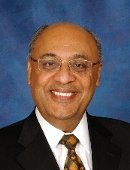22 Jul High Risk Plaques Account for Only Half of Acute Coronary Events
 MedicalResearch.com Interview with:
MedicalResearch.com Interview with:
Dr. Jagat Narula MD, PhD
Associate Dean For Global Affairs
Professor Medicine, Cardiology and Radiology
Mt. Sinai Hospital, NY
Medical Research: What is the background for this study? What are the main findings?
Dr. Narula: The cardiovascular diseases remain number one cause of mortality in men and women and in high as well as middle and low income countries. It is important that we identify those who are likely to die of preventable causes. Identification of the vulnerable plaques that are likely to result in acute events has been an interesting focus of investigators, and numerous intravascular imaging and noninvasive imaging strategies have been employed. CT angiography has offered fairly attractive accuracy. We were the first to establish the features of high-risk plaques (Motoyama, Narula JACC 2007) and their short-term prognostic implications (Motoyama, Narula JACC 2009). In this new paper in a large population we present intermediate- to long-term follow-up that critically analyzes the role of plaque characterization and puts it in perspective. Should we keep chasing plaques or should we treat the patient? Does the answer lie in high risk plaque busting or prevention be the mainstay?
From the previous studies from us and others we have known that computed tomography angiography (CTA)-based plaque characteristics identify high-risk plaque (HRP) that predict short-term risk of acute coronary syndrome (ACS). We in this study wanted to evaluate whether plaque characteristics by CTA would predict intermediate- to long-term likelihood of acute events. The presence of high-risk plaque characteristics were evaluated in more than 3000 patients undergoing CTA and plaque progression (PP) in additional 450 patients who had two CTA one year apart. We recorded fatal and nonfatal acute events and outcomes during follow-up: mean about 4 years and maximum up to 10 years. Acute Coronary Syndrome occurred in about 40 of ~300 (16%) with high risk plaque and 40 (less than 1.5%) of the remaining patients with non high risk plaques. In patients with serial CTA, plaque progression also was an independent predictor of ACS, with HRP (27%) and without HRP (10%) compared with patients without plaque progression (0.3%).
Medical Research: What should clinicians and patients take away from your report?
Dr. Narula: CTA-based characteristics of high risk plaques were independent predictors of Acute Coronary Syndrome. However, the cumulative number of ACS patients with HRP was similar to patients without HRP. Although Acute Coronary Syndrome incidence was 10-fold lower in non high risk plaques, the cumulative number of patients developing ACS was similar to those with high risk plaques; because the number of patients with non high risk plaques was 10-fold higher.
Although it is feasible to identify high-risk plaques and these plaques do result in adverse events, our focus must remain on the patient and risk factors. If we only focus on plaque characteristics we would miss out on 50% of events. Prevention remains the key.
Medical Research: What recommendations do you have for future research as a result of this study?
Dr. Narula: Plaque characterization should be commonly adapted while interpreting CT angiography, and we must not only be limited to the results of plaque induced luminal stenosis. Although fairly large, further confirmation of results in different cohorts would strengthen data. It is Important that we have better automation for plaque analysis. Noninvasive FFR assessment would complement the area of high-risk plaques further. However, it is fairly convincing that our emphasis must remain on the diffuse disease process and prevention rather than a plaque-based approach.
Citation:
[wysija_form id=”3″]
Dr. Jagat Narula MD, PhD (2015). High Risk Plaques Account for Only Half of Acute Coronary Events
Last Updated on July 22, 2015 by Marie Benz MD FAAD
